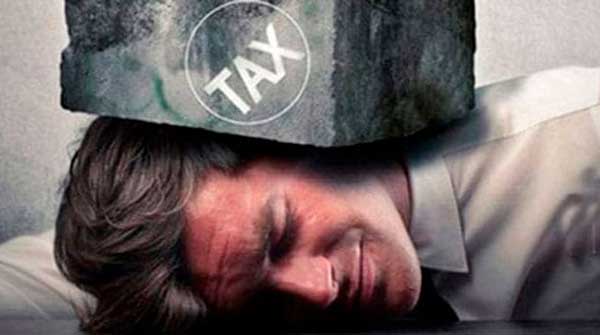Better decisions by the government could have led to a cut in PST
 One point of PST revenue – that’s how much the interest on the provincial debt costs you.
One point of PST revenue – that’s how much the interest on the provincial debt costs you.
In 2023, the provincial government is expected to finally balance its budget. This is great news; it comes along with inflation relief cheques and up to $1 billion in debt repayment. If only this happened every year.
It could have, if the government had been willing to make the tough choices in the past. And you could have got a PST cut out of it.
The PST, a tax you must continue to pay after you pay all other taxes, applies to almost everything you buy. During the holidays, the PST cost Saskatchewan taxpayers $40 million. This year, the government plans to collect $2.6 billion in PST. That’s over $2,100 per person.
 |
| Related Stories |
| Forecast calls for a strong recovery in crude oil demand
|
| Albertans saved big on holiday shopping with no PST
|
| Geothermal energy could give old oil and gas wells a new lease on life
|
Now that’s a lot of cash, but here’s the kicker: since the budget was last balanced in 2014-15, the government has spent $3.6 billion on interest payments on the debt. If the government had managed its money correctly, it could have provided a one percentage point cut in the PST for all nine years.
If the debt can didn’t get kicked down the road, everything you buy today could be cheaper. Now, instead of getting a better deal on that car you bought, you’re paying for politicians’ bad spending habits.
Say you spent $10,000 on a new-to-you vehicle, bought $200 worth of clothes for your kids, and went out to eat once a month at $65. In total, you could expect to pay $658 in PST.
If the government cut the PST by a point today, your tax bill would drop by $109. That’s a tank of gas or a trip to the grocery store. Instead, that money is being wasted on interest payments.
Now why has this happened?
Why is the government wasting hundreds of millions of dollars a year on interest payments instead of cutting taxes?
Well, the Saskatchewan government has a history of failing to balance the budget. Instead of being responsible and only spending what it brings, the government decided to keep swiping the taxpayer’s credit card and rack up the debt.
Some of the latest debt can be attributed to pandemic spending, but this trend of the government spending beyond its means started long before 2020.
The Saskatchewan Party has presided over 15 full budget years since being elected in 2007. In 2009, Saskatchewan had its largest debt reduction on record, a move that reduced the debt all the way down to $4.15 billion. A great step that failed because of what came after it.
Since 2007, the government has only balanced the budget five out of those 15 times. Not because there wasn’t any money but because there was too much new spending. After adjusting for inflation, government revenues have increased by 20 per cent since 2007. Meanwhile, spending increased by 56 per cent.
When you spend more than you make one month, you cut back on beer for the next; you don’t go out and finance a new truck. Now, because the government refused to cut back, taxpayers are paying for it.
Since 2014-15, when the Saskatchewan government last balanced its budget, the debt has tripled from $4.7 billion to a projected $17.1 billion at the end of this year. That averages out to over $14,000 per Saskatchewanian.
With debt comes interest payments, and due to seven consecutive deficits, Saskatchewan’s interest payments keep getting larger and larger.
Interest payments in 2015 were about $266 million. In 2023, they are projected to reach over $620 million. That’s a 125 per cent increase in only nine years. It’s a problem that will only get worse as interest rates rise.
Put another way, if the government had been responsible and paid back the debt earlier, the money set aside for interest payments this year alone could have been used to fund another $500 cheque to every single person in the province.
But instead of taxpayers getting further relief, the money is being sent to big banks and bond fund managers. None of that money is being used to pay down the debt; it is only paying the interest.
This year the government is on the right track by planning to reduce the debt, but more hard work needs to be done if they want to make up for all the money wasted maxing out the taxpayer’s credit card.
Gage Haubrich is the Prairie Director for the Canadian Taxpayers Federation
For interview requests, click here.
The opinions expressed by our columnists and contributors are theirs alone and do not inherently or expressly reflect the views of our publication.
© Troy Media
Troy Media is an editorial content provider to media outlets and its own hosted community news outlets across Canada.

